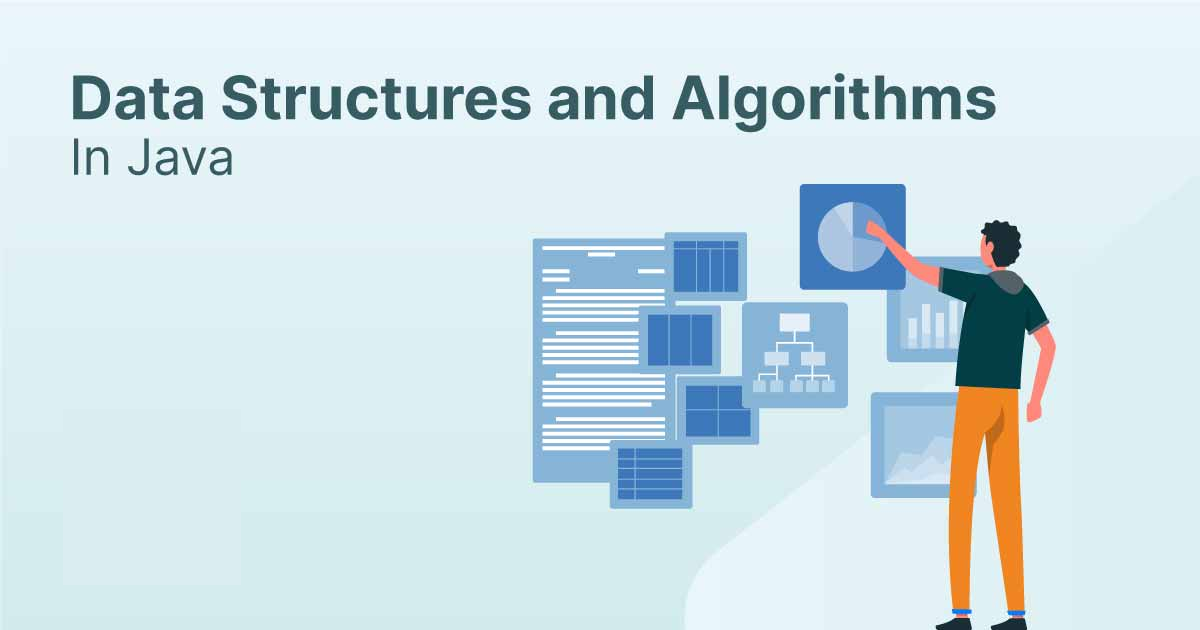Learn Data Structures and Algorithms with Java: A Starter's Guide
 Raaj Aryan
Raaj Aryan
Data Structures and Algorithms (DSA) form the backbone of computer science, playing a crucial role in writing efficient and optimized code. For Java developers, mastering DSA is essential for solving complex problems and enhancing performance. This blog will introduce you to the basics of data structures and algorithms, their importance, and a brief overview of commonly used data structures and algorithms in Java.
Why Data Structures and Algorithms Matter
In software development, writing code that works is not enough; it must be efficient in terms of time and space complexity. Here’s why DSA is critical:
Efficiency: Proper use of data structures and algorithms can significantly reduce the time complexity of your code, making it faster.
Scalability: Efficient algorithms and data structures ensure that your code can handle large amounts of data gracefully.
Optimization: They help in optimizing resources, leading to better performance and lower costs.
Problem-Solving: Understanding DSA improves your problem-solving skills, enabling you to tackle a wide range of computational problems.
Commonly Used Data Structures
Let's look at some fundamental data structures in Java:
Arrays
Description: A collection of elements identified by index or key.
Use Cases: Suitable for scenarios where the size of the collection is fixed.
Example:
int[] numbers = {1, 2, 3, 4, 5};
Linked Lists
Description: A linear collection of nodes, where each node points to the next node.
Use Cases: Useful when frequent insertion and deletion of elements are required.
Example:
class Node { int data; Node next; Node(int d) { data = d; next = null; } }
Stacks
Description: A collection of elements with LIFO (Last In, First Out) access.
Use Cases: Ideal for problems like balancing parentheses, function call management.
Example:
Stack<Integer> stack = new Stack<>(); stack.push(10); stack.push(20); int top = stack.pop(); // returns 20
Queues
Description: A collection of elements with FIFO (First In, First Out) access.
Use Cases: Useful in scenarios like order processing, scheduling tasks.
Example:
Queue<Integer> queue = new LinkedList<>(); queue.add(10); queue.add(20); int front = queue.poll(); // returns 10
Trees
Description: A hierarchical structure with nodes connected by edges.
Use Cases: Suitable for representing hierarchical data like file systems.
Example:
class TreeNode { int data; TreeNode left, right; TreeNode(int d) { data = d; left = right = null; } }
Graphs
Description: A collection of nodes (vertices) connected by edges.
Use Cases: Useful for representing networks, such as social networks or transportation systems.
Example:
class Graph { private int V; private LinkedList<Integer> adjListArray[]; Graph(int V) { this.V = V; adjListArray = new LinkedList[V]; for (int i = 0; i < V; i++) { adjListArray[i] = new LinkedList<>(); } } }
Key Algorithms
Here are some fundamental algorithms you should know:
Sorting Algorithms
Bubble Sort, Merge Sort, Quick Sort, Heap Sort.
Use Cases: Sorting data to make searching and analysis easier.
Example: Quick Sort Implementation:
public class QuickSort { int partition(int arr[], int low, int high) { int pivot = arr[high]; int i = (low-1); for (int j = low; j < high; j++) { if (arr[j] <= pivot) { i++; int temp = arr[i]; arr[i] = arr[j]; arr[j] = temp; } } int temp = arr[i+1]; arr[i+1] = arr[high]; arr[high] = temp; return i+1; } void sort(int arr[], int low, int high) { if (low < high) { int pi = partition(arr, low, high); sort(arr, low, pi-1); sort(arr, pi+1, high); } } }
Searching Algorithms
Linear Search, Binary Search.
Use Cases: Finding an element in a collection.
Example: Binary Search Implementation:
public class BinarySearch { int binarySearch(int arr[], int x) { int l = 0, r = arr.length - 1; while (l <= r) { int m = l + (r - l) / 2; if (arr[m] == x) return m; if (arr[m] < x) l = m + 1; else r = m - 1; } return -1; } }
Dynamic Programming
Fibonacci Sequence, Knapsack Problem.
Use Cases: Solving problems by breaking them down into simpler subproblems.
Example: Fibonacci Sequence Implementation:
public class Fibonacci { int fib(int n) { if (n <= 1) return n; return fib(n-1) + fib(n-2); } }
Conclusion
Mastering data structures and algorithms in Java is essential for developing efficient and scalable applications. This introduction has provided a glimpse into the fundamental data structures and algorithms, showcasing their importance and basic implementations. By understanding and utilizing these concepts, you'll be better equipped to solve complex problems and optimize your code effectively.
In future posts, we'll dive deeper into each data structure and algorithm, providing detailed explanations, real-world applications, and advanced techniques. Stay tuned and happy coding!
Subscribe to my newsletter
Read articles from Raaj Aryan directly inside your inbox. Subscribe to the newsletter, and don't miss out.
Written by

Raaj Aryan
Raaj Aryan
MERN Stack Developer • Open Source Contributor • DSA With Java • Freelancer • Youtuber • Problem-solving •